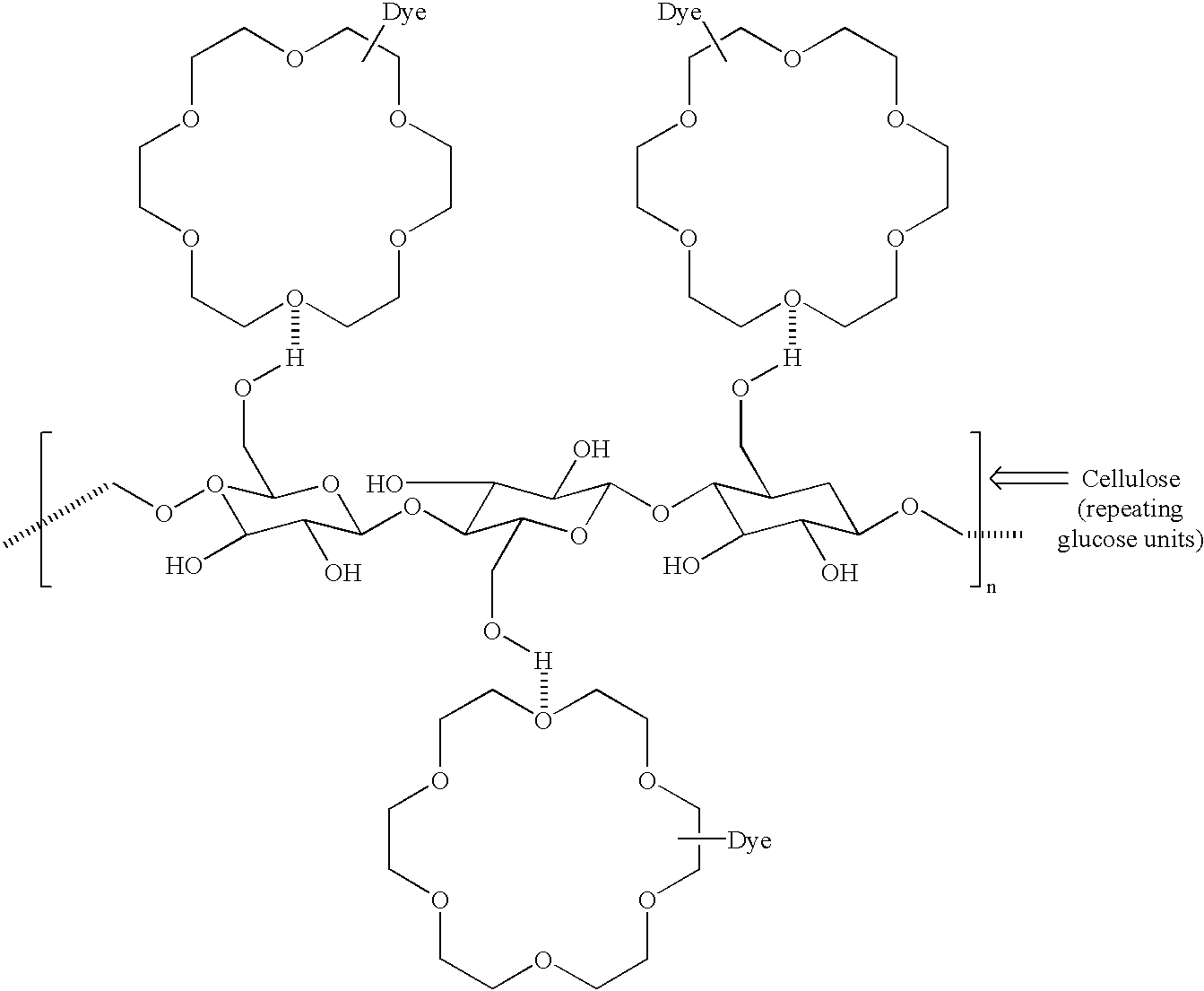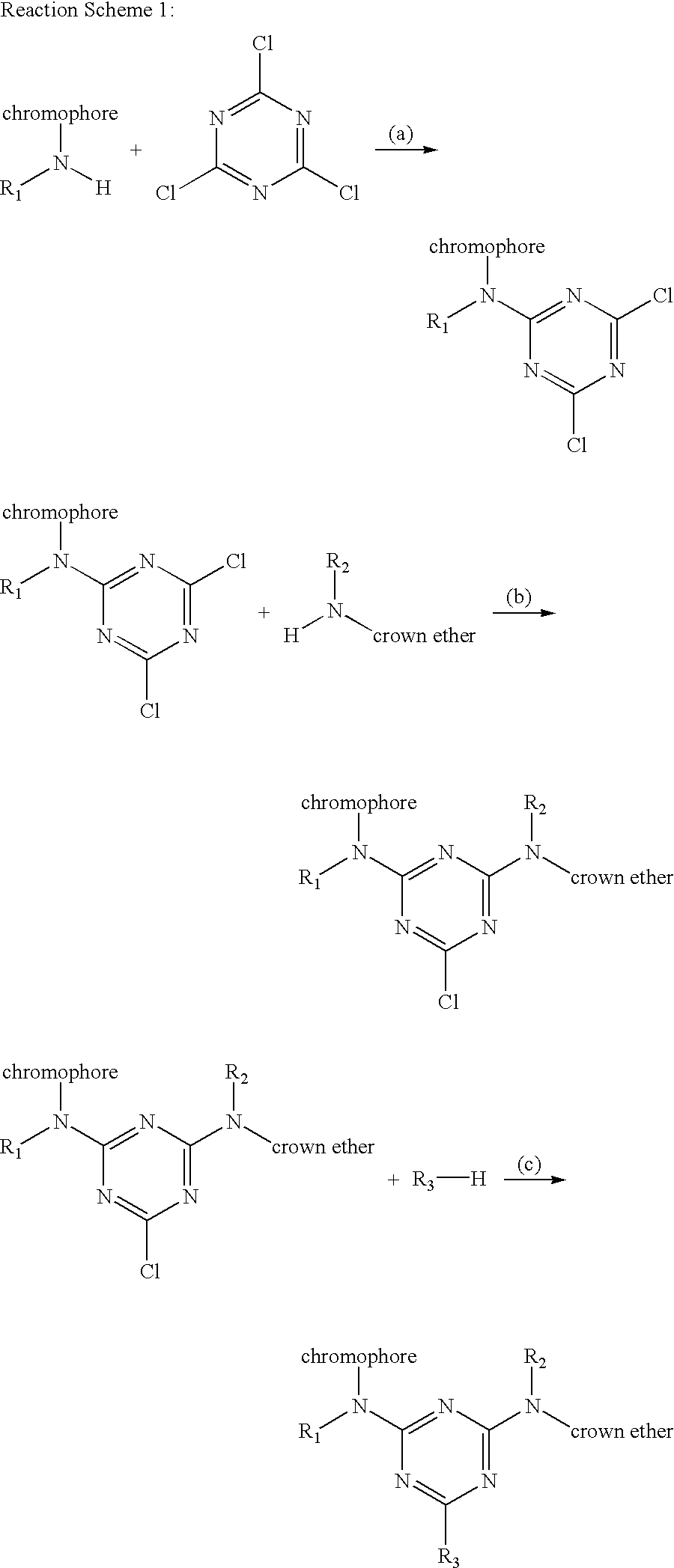Derivatization of dyes/pigments with crown ethers and inkjet printing fluids containing the same
a technology of dyes/pigments and inkjet printing fluids, which is applied in the field of inkjet inks, can solve the problems of affecting the lightfastness of printed materials, reducing the chroma of printed materials, and degrading the media on which the print is placed, so as to improve the chroma, improve the smudgefastness, improve the lightfastness, and improve the smudgefastness.
- Summary
- Abstract
- Description
- Claims
- Application Information
AI Technical Summary
Benefits of technology
Problems solved by technology
Method used
Image
Examples
Embodiment Construction
[0022] Definitions
[0023] Reactant Fluid: also known as a fixer fluid. A fluid that is typically substantially devoid of color (i.e., the reactant fluid may contain no colorant (e.g., dye or pigment), or it may contain a colorant that does not absorb visible light but may absorb in either or both the IR or UV spectrums). The reactant fluid comprises a component (a molecule or complex, or a functional group in a molecule or complex) that is reactive with a component (a molecule or complex, or a functional group in a molecule or complex), including the colorant, in an ink thus providing for enhanced image integrity of printed areas created with the ink; such as increased waterfastness, smearfastness, smudgefastness or bleed alleviation; improved color vibrancy, improved edge acuity, or reduced dry time; in the event that the reactant fluid and the ink are printed at least partially on a same pre-determined area on a print medium, or on predetermined areas adjacent one another on a prin...
PUM
 Login to View More
Login to View More Abstract
Description
Claims
Application Information
 Login to View More
Login to View More - R&D
- Intellectual Property
- Life Sciences
- Materials
- Tech Scout
- Unparalleled Data Quality
- Higher Quality Content
- 60% Fewer Hallucinations
Browse by: Latest US Patents, China's latest patents, Technical Efficacy Thesaurus, Application Domain, Technology Topic, Popular Technical Reports.
© 2025 PatSnap. All rights reserved.Legal|Privacy policy|Modern Slavery Act Transparency Statement|Sitemap|About US| Contact US: help@patsnap.com



